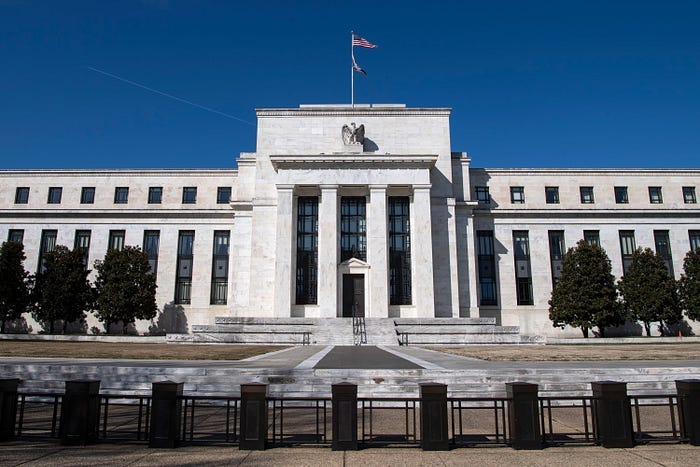US FED Keeps Interest Rates Unchanged
Fed's Stance on Interest Rates: A Balancing Act Amid Economic Uncertainties.
Persistent High Inflation Leads to Steady Rates
The Federal Reserve's unanimous decision of 1st May to maintain interest rates at a 23-year peak of 5.25%-5.50% underscores a significant economic standoff: high inflation rates with insufficient progress towards the 2% target. Despite the anticipation of policy shifts, the Fed's assertion of a status quo highlights the challenges in balancing economic growth and inflation control. This decision marks a continuation of rates that have been constant since July 2023, reflecting a cautious approach amid fluctuating economic indicators.
Fed's Strategy: Clarity and Confidence Needed Before Change
In their policy statement, the Federal Reserve officials emphasized the ongoing struggle to steer inflation back to the desired 2% mark. The lack of "further progress" suggests that the inflationary pressures are more stubborn than anticipated, leading to a prolonged period of high rates. The Fed has set a clear criterion for rate adjustments: substantial confidence that inflation is on a sustainable downward trajectory. This cautious stance points to an intricate balancing act where the Fed is preparing for multiple economic scenarios without committing prematurely to rate cuts.
Economic Outlook: Uncertainty and Adjustments
The Federal Open Market Committee (FOMC) has characterized the economic outlook as "uncertain," indicating a complex interplay of factors influencing future monetary policy decisions. Fed Chair Jay Powell, in his recent statements, highlighted the delicate nature of the current economic environment, with mixed signals on employment and inflation. This uncertainty has led the Fed to adopt a wait-and-see approach, carefully monitoring economic data to determine the appropriate timing for future rate adjustments.
Potential Scenarios: Holding Off or Cutting Rates
Powell outlined possible economic paths that could influence the Fed's rate decisions. One scenario involves holding off on rate cuts if inflation remains high and the labor market continues to show strength. Conversely, a more confident outlook on inflation moving towards the 2% target, coupled with potential weaknesses in the labor market, could justify rate reductions. This dual-path strategy shows the Fed's readiness to adapt its policy in response to changing economic conditions.
Stagflation Concerns and Historical Comparisons
Addressing concerns about stagflation, Powell dismissed parallels with the 1970s scenario of stagnant growth and high inflation. His confidence in the distinct nature of current economic challenges reflects an optimism that today's tools and insights could better manage potential stagflation risks compared to past decades. Powell's reference to his experiences during the 1970s serves to reassure markets that the Fed is equipped to handle complex economic phenomena without repeating historical downturns.
Upcoming Economic Projections and Balance Sheet Adjustments
The Fed's decision to update its economic projections in the upcoming policy meeting indicates an ongoing evaluation of its strategies. Additionally, the adjustment in the balance sheet reduction pace—from $60 billion to $25 billion in Treasury securities—suggests a strategic move to stabilize market operations. This careful management of the balance sheet alongside interest rate decisions highlights the Fed's dual focus on supporting economic stability while cautiously navigating back to its inflation targets.
In summary, the Federal Reserve's latest decisions reflect a comprehensive strategy aimed at navigating through economic uncertainties with a flexible yet cautious approach. The commitment to maintaining high interest rates until more definitive progress is seen in inflation reduction demonstrates the Fed's vigilant stance in fostering economic stability and growth.



